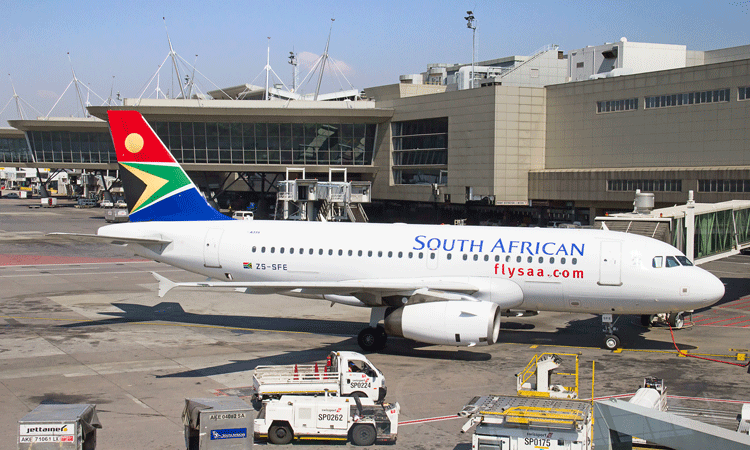In this article, FurkanÖzdemir, an aviation instructor at Atilim University, examines the single African air transport market, the benefits it brings, the progress so far, and the challenges it faces.


A fundamental component of Africa's quest for a truly integrated aviation industry was regulatory harmony under the Single African Air Transport Market (SAATM). Harmonization aims to launch new routes, reduce costs and promote economic development through consistent air transport laws, licensing, safety standards and consumer protection measures. However, the scale and complexity of the settlements of 54 national regulatory regimes raises doubt. Is this purpose very ambitious or has been postponed for a long time, considering that Yamoussoukro's decision (YD) requires it to go back to January 1999?
SAATM background and purpose
Most importantly, the SAATM implementation protocol aligns domestic laws with continental regulations.
Adopted in 1999, YD was the first Pan-Africa agreement to liberalize aviation services by providing freedom of flight, a fifth right to transport, and other market opening measures. Nonetheless, implementation has been lagging behind, prompting the African Union (AU) to launch SAATM in January 2018 with its commitment to full liberalization of the African internal market. Regulation harmonization in SAATM aims to standardize economic regulations (air service licensing, competition regulations), safety monitoring, security protocols and consumer protection laws. The African Civil Aviation Commission (AFCAC) leads the state in developing consistent legal texts. Most importantly, the SAATM implementation protocol aligns domestic laws with continental regulations. As of mid-2023, 34 countries have signed SAATM pledges, but only 18 have ratified the implementation protocols necessary for legal harmony, which rose from 32 signers in 2020 to 35 in 2022.
Progress so far
ICAO and IATA offer model regulatory texts, capacity building workshops, and best practice compensation to support harmony. At the same time, the African Development Bank (AFDB) is funding awareness campaigns and technical assistance. Despite these efforts, only 15% of target states fully adopt harmonious standards. Progress indicators, including the number of states applying YD regulations, have risen conservatively, with several regional corridors (particularly West and East Africa) seeing new routes. Still, vast parts of the continent remain unconserved.


Important Benefits of Harmony
A consistent licensing regime eliminates overlapping bilateral negotiations and lowers airline barriers to operations across multiple jurisdictions. The IATA estimates that opening 12 major markets could potentially increase 155,000 new jobs and an annual GDP of USD 1.3 billion. Local Safety Monitoring Organizations (RSOOs) provide harmonious monitoring, ensuring consistent application of ICAO standards and recommended practices, and reduce the risk of accidents. Standard security protocols streamline passenger and cargo screening across boundaries. Convergence of consumer protection regulations – covering delays and pricing compensation – build passenger trust and encourage travel. A single framework avoids a patchwork of regulations that disrupt airlines and consumers.
Key challenges
States often view aviation regulations as strategic assets. Refusing control over market access and route charging fees will come across resistance, especially when domestic airlines seek protection and some governments fear loss of revenue from slot allocations. Many African civil deployment authorities lack the technical expertise and financial resources to transpose and implement complex harmonious rules. At the same time, underfunded RSOOs lead to uneven safe oversight capabilities across the region. Translation of continental protocols into domestic law requires long legislative amendments, skills in regulatory measures, and consultation of stakeholders. Finally, frequent changes in ministerial leadership and changes in national priorities can stall ratification and implementation, and although there is no sustainable, high-level political commitment, including the support of designated SAATM champions and AU-summit, momentum will soon fade.
Conclusion: Ambitious but long postponed
The harmony of regulations under the SAATM is undoubtedly ambitious, demanding dozens of sovereign regulatory regimes, broad capacity building and unwavering political solutions. But it's also been a long time late. The original Yamoussoukro decision envisaged a liberal, integrated African aviation market over 20 years ago. In today's global economy, regional blocs such as the EU and ASEAN Leap Scale benefit from standard aviation regulations. By comparison, fragmented markets in Africa are performing poorly. Harmony remains a lynchpin to unlock the economic potential of the continent. That is to say, increase connectivity, security, competition and increased consumer trust. The roads are steep, but long-term benefits are not only desirable, but essential, and are rarely too ambitious given African aviation aspirations.
Tangible Steps to Quick Harmony
Form a “club that is ready and pleased” (crew). Ratification statuses of age 18 and older are grouped into first-track cohorts modeling best practices, and new pairs of cities and streamlined licenses within African cities are presented as case studies that create peer pressure. We will partner with AFDB and ICAO to leverage the SAATM Regulatory Fund, Financing Law Draft, ICT Systems and Staff Training Funding. Payment of milestones such as model adoption and stakeholder meeting workshops through the Local Economic Community (RECS). Sign members to ECOWAS, EAC, SADC etc. within 6-12 months to commit members to harmonize licenses, safety and consumer right rules. Expand pilot implementation projects for geographic clusters (such as Kenya, Uganda, Tanzania Corridors) to generate early route openings. Distribute ready-made model regulatory texts for economic regulation, safety monitoring and passenger rights. We encourage prompt parliamentary procedures to ensure that the SAATM protocol becomes law within six months of ratification. Launch the public SAATM dashboard managed by AFCAC/ICAO. This will track ratification status, implementation scores, and upcoming deadlines and update Quarterly. The findings published in the Yamoussoukro Decision Week.Align Incentives and Disincives, which institutionalizes the annual peer review audit within RECS. It is subject to the addition of five-storey rights, reducing overflight fees, rewarding fully compliant state airlines with access to AU/AFDB aviation infrastructure and meeting harmony milestones. Strengthen institutional capacity. Increase RSOO budgets and staffing to ensure unified safety monitoring, and conduct quarterly multilingual regulation workshops with IATA and AFRAA to build drafting and enforcement expertise. Appointing SAATM champions as head of state to ensure binding ratification deadlines, enforce consequences such as loss of subsidies for violations, and maintain harmony at the forefront of the national agenda.

 FurkanÖzdemir is an aviation expert specializing in aviation politics, network planning and regulatory policies. He plays a key role in the Director of Turkish Airlines and the Civil Aviation Bureau of Türkiye, with experience in international negotiations, route development and slot coordination. He currently leads business development at Aeroclass.org and lectures on aviation management at Atilim University. Furkan holds a Masters degree in International Relations and pursues a PhD focused on aviation policy.
FurkanÖzdemir is an aviation expert specializing in aviation politics, network planning and regulatory policies. He plays a key role in the Director of Turkish Airlines and the Civil Aviation Bureau of Türkiye, with experience in international negotiations, route development and slot coordination. He currently leads business development at Aeroclass.org and lectures on aviation management at Atilim University. Furkan holds a Masters degree in International Relations and pursues a PhD focused on aviation policy.


